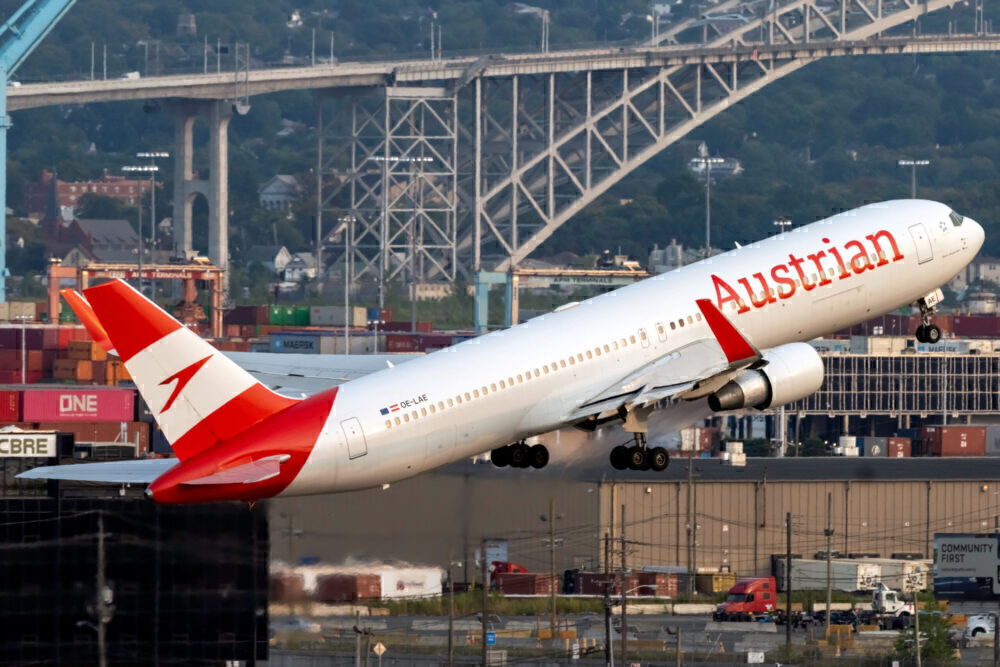While there were hopes of a different fate for Austrian Airlines’ oldest Boeing 767, reports have emerged that 30-year-old OE-LAT is currently being dismantled in the Arizona desert. Meanwhile, its slightly younger sibling is stored at a general aviation airport in Minnesota, which also houses a maintenance facility for cargo specialist Kalitta Air.

Stripped of its P&W engines
We have been closely following the fate of Austrian Airlines’ Boeing 767s here at Simple Flying. Even though the airline managed to find a new owner for three of the classic red-and-white liveried widebodies, unfortunately, it looks as if at least one will not fly again. As aeroTELEGRAPH reports, photos have emerged from the aircraft graveyard at Pinal Airpark, Arizona, of OE-LAT stripped of its engines.
The aircraft, the first 767 to leave Austrian’s fleet as part of a reshuffling to mitigate the impact of the crisis, flew from Vienna to the US on March 3rd this year. It cleared customs in Maine before it continued to Arizona, where it was handed over to its new owners, MonoCoque Diversified Interests (MDI).
When Austrian Airlines announced the successful sale of half of its 767s in February, MDI’s manager said the company was excited to continue to grow its passenger and cargo portfolio. However, now it would seem as if it intends to merely make use of OE-LAT’s Pratt & Whitney PW4060 engines.

Long-serving veterans
Before OE-LAT was retired, it was the oldest widebody aircraft across all of the Lufthansa Group. It had completed 133,000 flight hours, which equates to 15 years in the air. Prior to its exit had also performed some 19,000 take-offs and landings since beginning its career with Martinair Holland in 1991. It was almost immediately transferred to Lauda Air, and there it remained before joining Austrian’s fleet in 2007.
The second elder Austrian Boeing 767 followed it across the Atlantic late last month. OE-LAX, just one year junior to OE-LAT, beat its older sibling with 133,600 flight hours and 19,600 take-offs and landings. It may also yet see a different fate than OE-LAT.

Rather than heading to an aircraft boneyard in the desert after clearing customs, the aircraft is now stored at Oscoda-Wurtsmith Airport, Michigan. The airport caters mostly to general aviation. However, it is also the location of a Kalitta Air maintenance facility.
While the Minnesota-based cargo carrier services aircraft from many airlines at the premises, it has a fleet of nine Boeing 767s, all of an age between 21 and 31. Would it be entirely unthinkable that it could be looking to lease additional aircraft of the same type, given the uptick in cargo demand following the crisis?
What do you think will happen to the remaining two Austrian 767s purchased by MonoCoque? Leave a comment below and let us know.
[ad_2]
Source link


